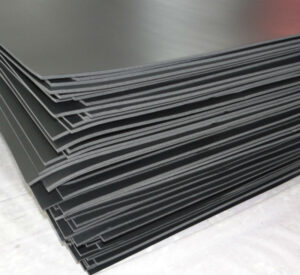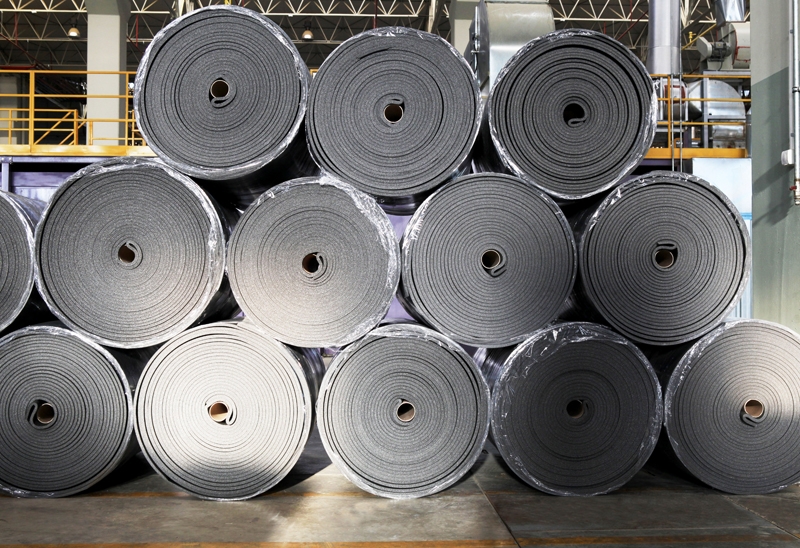- +90-544-774-1416
- info@hongkongfoam.com
Chemically or Physically Cross-Linked PE foam is a modified foam developed by mixing PE foam with multiple substances in the boiling phase or recompressing it under controlled heat and force in order to create a more dense and strong foam though with the same thickness as the primary PE
Highly Professional Manufacturing Procedure, Toxic (Chemically Cross-Linked), More Expensive

Water and non-acidic liquids Resistance, Highest Density with Lighter Weight, Abrasion & Corrosion and Heat Resilience, Shock and Force Resistant
Construction, Sport Goods, Medical, Packaging, Electronic Devices, Oil and Petroleum

DENSITY: 70-120 Kg/.m³
HARDNESS (SHORE A): 40
APPLICATIONS: variable
MOQ (SHEET): variable
LEAD TIME: 10-20 Business Days
COLOR: Black or Charcoal

DENSITY: 120 to 170 Kg/.m³
HARDNESS (SHORE A): 50
APPLICATIONS: Electronics
MOQ (SHEET): CONTAINER
LEAD TIME: 10-15 DAYS
COLOR: Black or Colored

DENSITY: 170 to 240 Kg/.m³
HARDNESS (SHORE A): 40
APPLICATIONS: variable
MOQ (SHEET): variable
LEAD TIME: Lead Time: 10-20 Business Days
COLOR: Black or Charcoal
The Making Procedure and comprehensive information regarding Cross-Linked PE Foam:
It starts with the manufacturing process of PE foam. The procedure splits into two different cross-linking methods based on the needs of the costumers that whether they have preference of implementing non-toxic but lower density foam product (still higher than the normal PE), or the chemically cross-linked foam which offers the highest densities possible among all foam or rubber types though at the cost of the product being unhealthy and noxious for almost all living beings.
In the physically cross-linking procedure, the finalized PE foam sheet is pressurized again before cooling under heat and constant pressing which causes foam molecules to be compressed closer to each other. The procedure reduces the thickness of the product though it is becoming denser than the normal manufactured PE foam with the same dimensions.
The chemically cross-linking procedure does not affect the thickness of the product. Instead, it will fill the gaps between the molecules of polyethylene making it denser than ever. But keeping the weight and dimensions the same. The additive for cross-linking process is Vinyl Acetate. This substance is highly relatable and makes the product softer, stronger and denser.
In comparison with many other foams, Cross-Linked PE is less affordable. The reason is firstly the difficult and highly professional manufacturing process and secondly the density of the products that is higher than the same ranks in the other foam types like EVA, NBR or EPDM.
Ready to buy foam? PleasE Order now.
If you need more information, Please contact us.
Cross-linked Polyethylene (XPE or XLPE)
High-density Polyethylene (HDPE)
Medium-density Polyethylene (MDPE)
Linear low-density Polyethylene (LLDPE)
Low-density Polyethylene (LDPE)
Very low-density Polyethylene (VLDPE)
Cross-Linked Polyethylene is a common material which can be found in any industry. Your environment could even include various types of this foam. For instance, in military bullet proof vests, board of electronic devices, protective pads in sports and medical industries and even shampoo bottles too. Depending on the various characteristics, cross-linked Polyethylene is a flexible material suitable for any use. In comparison with other types of foam, cross-linked polyethylene is always the dominant product. EPDM has more versatility than cross-linked polyethylene but lower resistances, NBR cannot possess the density rate of cross-linked polyethylene, CR does not offer low density products and finally SBR is not as variable as cross-linked polyethylene can be.
Cross-linked polyethylene is the most reliable foam product which can be implemented in cautious situations such as medical instruments and automotive parts.

Cross-linked polyethylene is known for its practicality in the foam industry
Resiliency & Flexibility
Expensive but Cost-Effective
Lightweight
Mold and Mildew Resistant
Resistance Against Chemical Substances and Weather Variables
Resistant Against Splashes of Oil
Durability
High Moisture Resistance Level
Despite being resistant against moisture, cross-linked Polyethylene foam possesses high water absorption rate. Moreover, being harmful for human health reduces implementations of this product where direct contact of human skin is probable.
This product is also moderately flammable, it does not burst into blaze though it most likely sets aflame like a candle being lit.
Chemically or Physically Cross-Linked PE foam is a modified foam developed by mixing PE foam with multiple substances in the boiling phase or recompressing it under controlled heat and force in order to create a more dense and strong foam though with the same thickness as the primary PE
Resiliency & Flexibility
Expensive but Cost-Effective
Lightweight
Mold and Mildew Resistant
Resistance Against Chemical Substances and Weather Variables
Resistant Against Splashes of Oil
Durability
High Moisture Resistance Level

Hong Kong Foam is the company based on trust and mutual interest between clients and manufacturers.
© 2022 HongKongFoam - All rights reserved
We will respond and call you as soon as possible